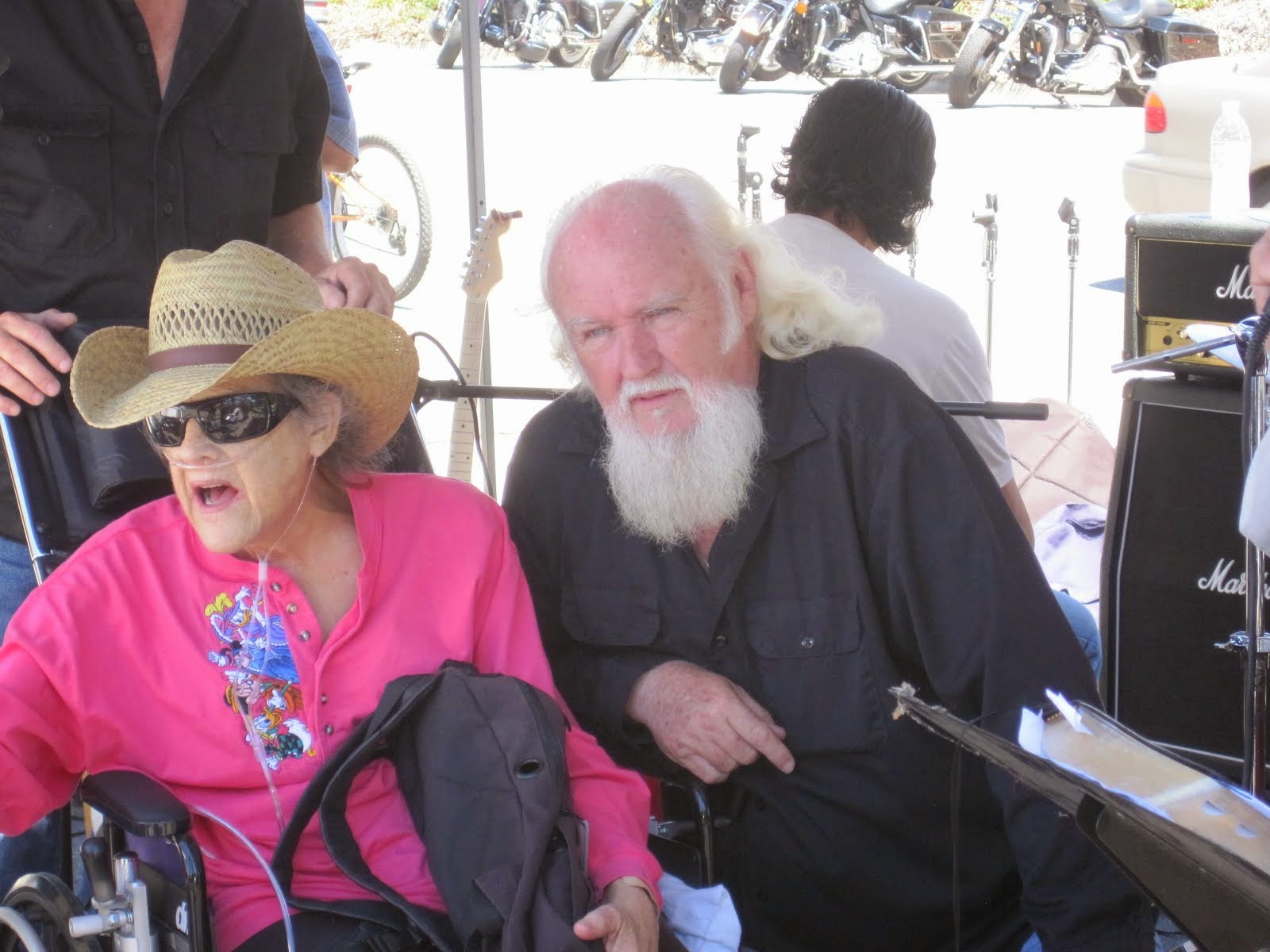OFF THE WIRE
BY: RAY RIVERA and AL BAKER
Source: nytimes.com
The New York Police Department has begun photographing the irises of people who are arrested in an effort to prevent escapes as suspects move through the court system, a police official said Monday.
The program was instituted after two embarrassing episodes early this year in which prisoners arrested on serious charges tricked the authorities into freeing them by posing at arraignment as suspects facing minor cases. The occurrences exposed weaknesses in the city’s handling of suspects as they move from police custody into the maze of court systems in the five boroughs.
With the new system, the authorities are using a hand-held scanning device that can check a prisoner’s identity in seconds when the suspect is presented in court, said Paul J. Browne, the department’s chief spokesman.
Officials began photographing the irises of suspects arrested for any reason on Monday at Manhattan Central Booking and expect to expand the program to all five boroughs by early December, Mr. Browne said.
The department has been working on the program for months, Mr. Browne said. But the effort caught many in the city’s legal circles by surprise as news of it began trickling out late last week. It is raising concerns among civil libertarians and privacy advocates, who say the authorities’ cataloging of the new data could put innocent people under permanent suspicion.
“It’s really distressing that the Police Department is once again undertaking a new regime of personal data collection without any public discourse,” said Donna Lieberman, the executive director of the New York Civil Liberties Union, “and we don’t know the reason for it, whether this is a necessary program, whether it’s effective to address the concerns that it’s designed to address, and whether in this day and age it’s even cost-effective, not to mention whether there are any protections in place against the misuse of the data that’s collected.”
Steven Banks, attorney in chief of the Legal Aid Society, said his office learned about the program on Friday in a phone call from the mayor’s criminal justice coordinator.
“This is an unnecessary process,” Mr. Banks said. “It’s unauthorized by the statutes and of questionable legality at best. The statutes specifically authorize collecting fingerprints. There has been great legislative debate about the extent to which DNA evidence can be collected, and it is limited to certain types of cases. So the idea that the Police Department can forge ahead and use a totally new technology without any statutory authorization is certainly suspect.”
Mr. Browne said a legal review by the department had concluded that legislative authorization was not necessary.
“Our legal review determined that these are photographs and should be treated the same as mug shots, which are destroyed when arrests are sealed,” he said.
The technology uses high-resolution images to identify unique patterns in the iris, the colored part of the eye. It is considered less intrusive than retinal scanning, which looks at patterns in the blood vessels in the back of the eye and can reveal information about a person’s health, raising privacy concerns.
The department’s collection and use of electronic data have long been controversial. A new state law forced the department to halt electronic storage of the names and addresses of people stopped under the stop-and-frisk program but not charged or arrested.
The iris database has other implications as well, potentially providing the department with a tool in the fight against terrorism. The military has been using similar biometric technology in Iraq and Afghanistan to develop a database of potential insurgents, though Mr. Browne said that the Police Department’s data was not intended for that use and that there had been no coordination with the Defense Department or the Federal Bureau of Investigation on the program.
Other police agencies and correctional facilities across the country also use iris recognition, though it was unclear on Monday how widespread the practice is.
Marc Rotenberg, the president of the Electronic Privacy Information Center, which focuses on emerging privacy and civil liberties issues, said that law and policy had developed over time on the collection of fingerprints, and more recently DNA, in the criminal justice system, and that iris scans fell somewhere in between.
“It’s a more accurate form of identification,” Mr. Rotenberg said of the scans, “but at the same time doesn’t raise the same privacy concerns that DNA data has.”
The program will cost the city $500,000 to implement and is being paid for through a grant from the Department of Homeland Security, Mr. Browne said.
In March, a suspect charged in a string of robberies, who had served time in prison for attempted murder, claimed to be another man, who was facing a charge of marijuana possession, as they were about to be arraigned on Staten Island. The ruse worked and the suspect, Freddie Thompson, was released and remained free for 56 hours before he was recaptured. Another suspect, Michael Bautista, who was facing charges of assault and criminal mischief in the Bronx, escaped in the same manner in February and remains at large.
Mr. Browne said he had no statistics on how often suspects had escaped in this manner, but he said the problem was not widespread.
William K. Rashbaum and Karen Zraick contributed reporting.
skip to main |
skip to sidebar




Bill & Annie

Art Hall & Rusty


NUFF SAID.......


































































OOHRAH

ONCE A MARINE,ALWAYS A MARINE

GIVING BACK


MOUNT SOLEDAD














BIKINI BIKE WASH AT SWEETWATER










FRIENDS





BILL,WILLIE G, PHILIP










GOOD FRIENDS


hanging out

brothers


GOOD FRIENDS

Good Friends

Hanging Out




Bill & Annie
Art Hall & Rusty
Art Hall & Rusty


NUFF SAID.......



















NUFF SAID......



























Mount Soledad




BALBOA NAVAL HOSPITAL
RUSTY DANNY

ANNIE KO PHILIP

PHILIP & ANNIE

OUT & ABOUT

OOHRAH...

OOHRAH
ONCE A MARINE,ALWAYS A MARINE

ONCE A MARINE,ALWAYS A MARINE
American Soldier Network GIVING BACK

GIVING BACK
CATHY & BILL
PHILIP & DANNY & BILL

MOUNT SOLEDAD
bills today
EMILIO & PHILIP
WATER & POWER
WATER & POWER
bootride2013



BIKINI BIKE WASH AT SWEETWATER







ILLUSION OPEN HOUSE

FRIENDS


GOOD FRIENDS



BILL,WILLIE G, PHILIP









GOOD FRIENDS

GOOD FRIENDS
Friends
- http://www.ehlinelaw.com/losangeles-motorcycleaccidentattorneys/
- Scotty westcoast-tbars.com
- Ashby C. Sorensen
- americansoldiernetwork.org
- blogtalkradio.com/hermis-live
- davidlabrava.com
- emiliorivera.com/
- http://kandymankustompaint.com
- http://pipelinept.com/
- http://womenmotorcyclist.com
- http://www.ehlinelaw.com
- https://ammo.com/
- SAN DIEGO CUSTOMS
- www.biggshd.com
- www.bighousecrew.net
- www.bikersinformationguide.com
- www.boltofca.org
- www.boltusa.org
- www.espinozasleather.com
- www.illusionmotorcycles.com
- www.kennedyscollateral.com
- www.kennedyscustomcycles.com
- www.listerinsurance.com
- www.sweetwaterharley.com

Hanging out

hanging out
Good Friends

brothers
GOOD FRIENDS

EMILIO & SCREWDRIVER

GOOD FRIENDS
Danny Trejo & Screwdriver

Good Friends
Navigation
Welcome to Bikers of America, Know Your Rights!
“THE BIKERS OF AMERICA, THE PHIL and BILL SHOW”,
A HARDCORE BIKER RIGHTS SHOW THAT HITS LIKE A BORED AND STROKED BIG TWIN!
ON LIVE TUESDAY'S & THURDAY'S AT 6 PM P.S.T.
9 PM E.S.T.
CATCH LIVE AND ARCHIVED SHOWS
FREE OF CHARGE AT...
BlogTalkRadio.com/BikersOfAmerica.
Two ways to listen on Tuesday & Thursday
1. Call in number - (347) 826-7753 ...
Listen live right from your phone!
2. Stream us live on your computer: http://www.blogtalkradio.com/bikersofamerica.
A HARDCORE BIKER RIGHTS SHOW THAT HITS LIKE A BORED AND STROKED BIG TWIN!
ON LIVE TUESDAY'S & THURDAY'S AT 6 PM P.S.T.
9 PM E.S.T.
CATCH LIVE AND ARCHIVED SHOWS
FREE OF CHARGE AT...
BlogTalkRadio.com/BikersOfAmerica.
Two ways to listen on Tuesday & Thursday
1. Call in number - (347) 826-7753 ...
Listen live right from your phone!
2. Stream us live on your computer: http://www.blogtalkradio.com/bikersofamerica.
Good Times
Hanging Out

Key Words
- about (3)
- contact (1)
- TENNESSEE AND THUNDER ON THE MOUNTAIN (1)
- thinking (1)
- upcoming shows (2)
Blog Archive
-
▼
2010
(4242)
-
▼
November
(629)
- NATIONWIDE, Americans Are Living (And Dying) In A ...
- CYBER SCAMS, BE WARNED....The 12 cyber scams of Ch...
- Media Campaign Begins, Head Injuries: Why Motorcyc...
- Football Helmets - NY Times, Used helmets worn by ...
- New Zealand, Warehouse new gang base
- Growth of San Diego's Navy fleet tied to tension i...
- Canada, ,Salmon Arm, Kelowna. 'They were up to no...
- SPINELESS PUKE BAG DISTRICT ATTORNEY, JONATHAN BLO...
- What are some good responses to this helmet statem...
- DOT vs. ECE Helmet Safety Standards
- Australia, Sydney, Strike force digs deep into dea...
- South Africa, Car driver causes chaos at PE bikers...
- Washington, DC, EDITORIAL: TSA's security charade
- New Delhi,India, IAS Officer Arrested For Barterin...
- Denver, CO. Donors line up to replace lost Christm...
- THE LAW AND YOU 1
- USA, The Eternal Value of Privacy, "Absolute power...
- Australia, Bandidos member found with gun......
- F .B. I.Deprivation of Rights Under Color Of LAW
- How to obtain a CCW permit, San Diego,Ca
- New Zealand, Marlborough, Lone Legion M/C, Warehou...
- CCW (Concealed- Weapons Permit) San Diego, Ca, Lit...
- US v. Camp Zoe
- DAYTONA, Private Company’s Registration of Bike We...
- CHESTER, S.C. These bikers ride for a cause, Iron ...
- Nevada, Carson City Probation Officer Accused of S...
- DUBAI, United Arab Emirates, Swiss motorbike cham...
- CAN WE RECORD COPS? Phone Calls and Research by Jo...
- Well, if you’re not doing anything wrong and have ...
- ANGOLA 3, IN ROBERT KING’S WORDS: “EVERYTHING LEGA...
- Ex-Marine Marching Across America Stops in Trenton
- South Attleboro, MA. Joes Sock Fund – Can you help?
- Midland, Texas - Feds Push for Nationwide Motorcyc...
- DOJ Components' FOIA Service Centers/Liaisons
- United States Dept of Justice, Freedom of Informat...
- READERS SOUND OFF, Case Against Motorcycle Helmet ...
- Bahrain, Parading patriotism!!!!!!!!!!!!!!!!
- Appeals court derails use of GPS in case, Decides ...
- LITTLETON, Colo. Charity donations stolen
- Sons of Anarchy: Sonny Barger Cameo, Featuring Att...
- Freedom of Information Act ,FOIA Reference Mater...
- More excellent info here for helmets Transportatio...
- New Zealand, Gang members grieve for powerful, fe...
- CAN WE RECORD COPS?
- North Park, San Diego,Ca, Pepper-Spraying Men Rob ...
- OCEANSIDE, Calif. FYI: Marine Corps presents most ...
- EXCLUSIVE: Hells Angel Sonny Barger to Guest on 'S...
- United States Marine Corps, Marines Move Heavy Met...
- Canada, Hells Angels busted in Salmon Arm
- CCW (Concealed- Weapons Permit) San Diego
- Phoenix, AZ, Police ID Man Shot to Death Near Priv...
- Health care dictatorship: A crime against America
- Florida, Bikers, City Hall team up to honor veterans
- Fully Informed Jury Association
- Canada, Kelowna connection to bikers bust, Police...
- Company says it owns Bike Week name
- Where The Burgess Case Stands Now
- Photo`s, Videos,or Recording Your Traffic Stop, of...
- Australia, Senior officer 'hacked police computer ...
- Mexico's modern city succumbs to drug violence, MO...
- The One Big Investigation
- San Diego drug tunnel had railcar, tons of pot, an...
- Canada, Police 'harassment' frustrates Pammett
- Australia, Bikies charged over fight in Fremantle
- Australia– Wiley Park, Alleged Bandidos OMCG memb...
- New York City Police Photograph Irises of Suspects
- FBI Thwarts Somali-Born Teen's Car Bombing, SCORE ...
- Orange County, CA, He Shall Be Set Free
- The First Banning of an MCs Colors in the USA
- Oppose S.510 - Do not take the chance of regulatin...
- San Diego,Ca, It’s easier riding for local motorcy...
- ALBANY, GA, Motorcycle club making holidays extra...
- Fond du Lac, WI - FdL police officer gets 3-day su...
- Taking Pictures of a Police Officer
- Biker Donations Help Feed Boys, Girls
- The Feds’ Illegal/Unauthorized/Murderous War on Bi...
- PENNSYLVANIA:Helmet debate begins anew NTSB puts i...
- Australia, Gypsy Jokers 'drug running' to mines
- Gangs Still Active in US Military
- Introducing Preacher Chuck D's Alpha Biker Road Rash
- 1st Annual Big Tom Berg Memorial Toy Drive
- New Zealand, Gang members grieve for powerful, fea...
- Australia, Bikers on drug charges in WA
- Australia, Bikie's partner guilty of stealing
- The Case Against Motorcycle Helmet Laws, Biker Ri...
- Sons of Silence Harley to Law Museum
- Australia, Bandidos gang member points loaded gun ...
- Australia, Finks front court over CCC contempt cha...
- Canada, Back-to-back suspicious fires in B.C. link...
- Former Pagan held for trial in shooting of College...
- Australia, Finks charged with contempt over motor...
- United Kingdom, Police chief faces misconduct probe
- QUOTES,
- Australia, Finks bikies face contempt charges in WA
- Co-Sponsor H.R. 1475 Good Time Bill
- Not specifically biker related... but certainly ri...
- SOUTH CAROLINA: NTSB Asks States to Improve Motorc...
- Pennsylvania, Helmetless riding a costly freedom
- Massachusetts, Attorney Paul Lancia Joins New Eng...
- "Hermis Live!"- 46 Minutes UNTIL SHOW
-
▼
November
(629)
Bikers of America, Know Your Rights!... Brought to you by Phil and Bill
Philip, a.k.a Screwdriver, is a proud member of Bikers of Lesser Tolerance, and the Left Coast Rep
of B.A.D (Bikers Against Discrimination) along with Bill is a biker rights activist and also a B.A.D Rep, as well, owner of Kennedy's Custom Cycles
